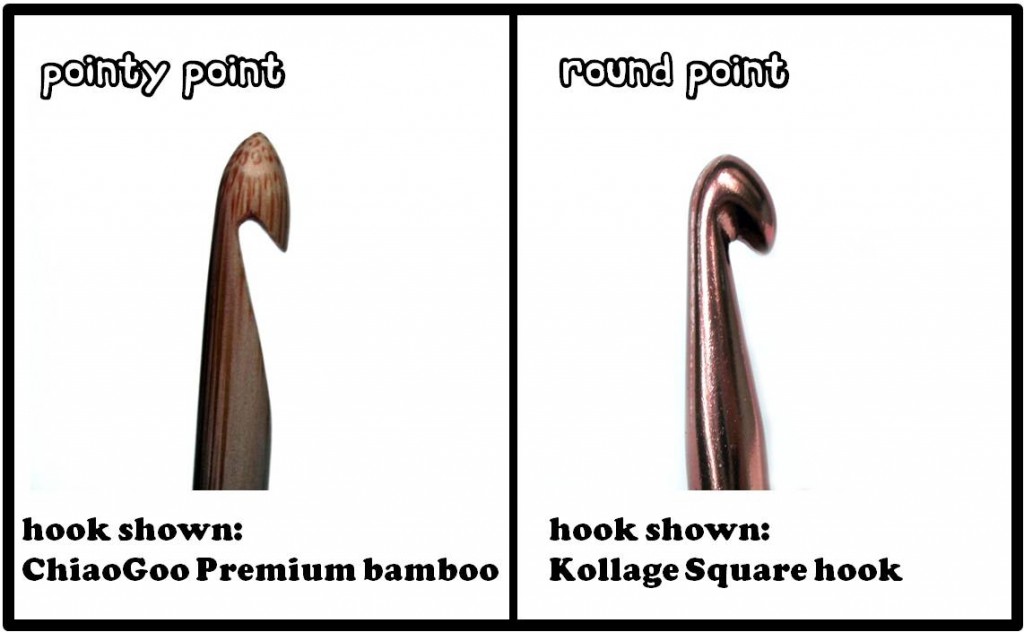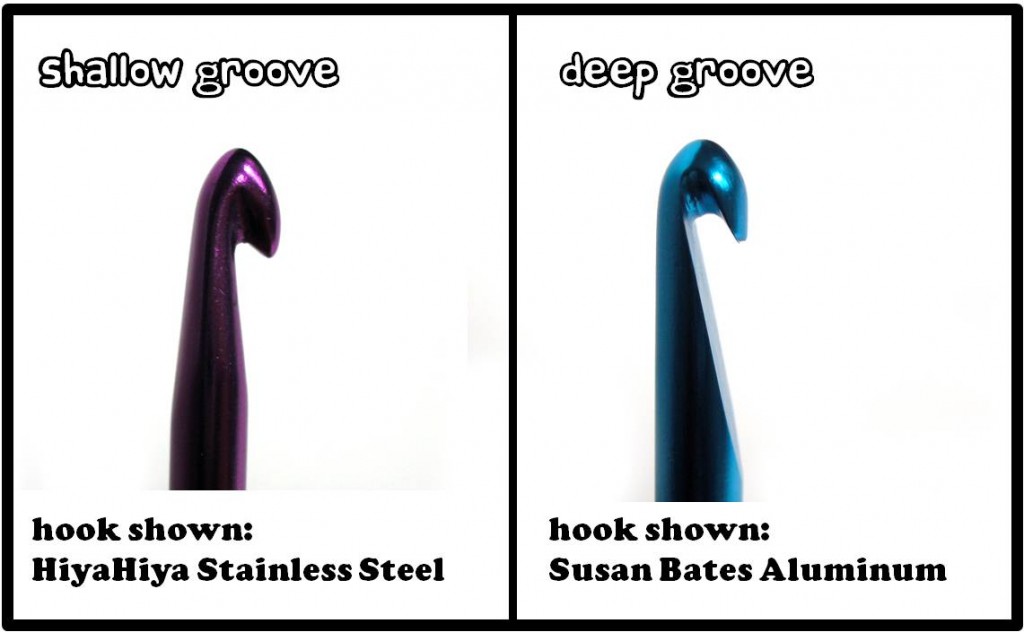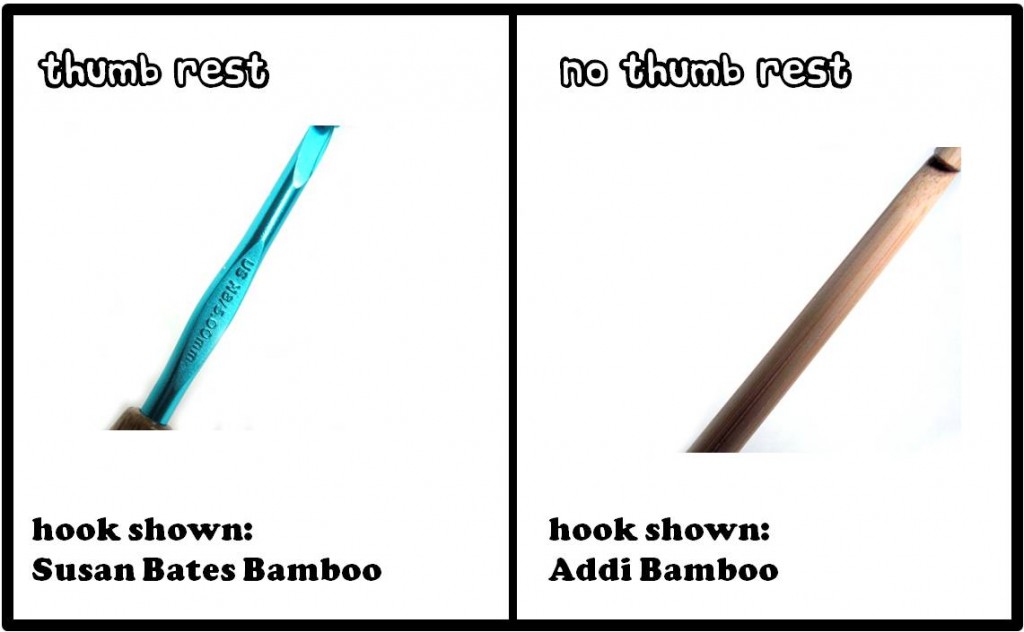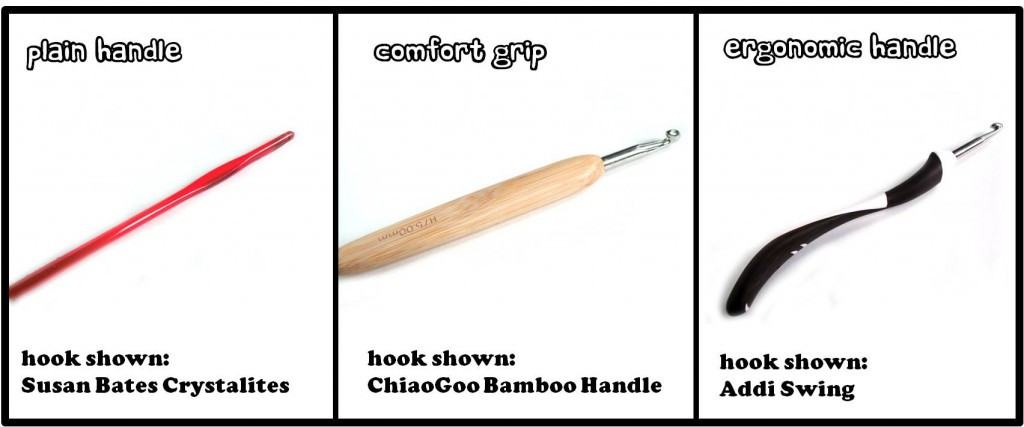So, yesterday you learned terminology associated with hook anatomy, and have a rough idea of ways in which hooks can differ… but what do all these differences look like in action? What’s the difference between a pointy and a rounded point? Let’s find out!
Finding out how to identify these differences in real-life hooks is crucial to helping you find your dream hook!
Points
The point of a hook makes a big difference to the way you crochet. A pointier point allows you to stick your hook into the next stitch much more easily than a rounded point, but comes at the risk of splitting your yarn. If you’re using a splitty yarn, then a rounder point is advisable.
Grooves
The groove is what catches your yarn as you pull it through the loop you’re working on. If the groove is too shallow, you’ll lose your yarn. If it’s too deep, it may get in the way of your crocheting rhythm. You may find that, as you become more experienced, your preference for groove depth changes.
Throats
An inline throat means that the width of the throat is the same all the way down the hook. This style helps some crocheters keep a more even gauge (especially for those who tend to crochet tightly). A tapered hook is much smaller at the top compared to where the throat meets the shaft.
Shafts
The shaft of the hook is what determines the size of your stitches. Since it’s job is to produce an even-sized stitch, most hooks have a straight shaft. However, occasionally, you’ll find a hook with a tapered shaft, and you’ll need to practice to make sure your gauge is spot on.
Thumb rests
A hook may or may not have a thumb rest. For some crocheters, a thumb rest is a convenient place to put your thumb and a way to maneuver the hook. For others, it just gets in the way. Whether or not you need one depends on your crocheting style.
Handles
The handle doesn’t need to be made from the same material as the hook. Many hooks have handles that are just an extension of the hook (or are ‘plain). Other hooks have comfort or ergonomic handles for your crocheting comfort. A ‘comfort handle’ is bigger than a plain one, and easier to grip. An ‘ergonomic handle’ is specifically shaped to rest in your hand for maximum comfort.
What’s the right one for you?
How do you know if you need a pointy point or a rounded one? That’s tomorrow’s topic!











My favorite crochet hook is my Susan Bates Quicksilver. But I find that the length of it is too short for me. I have a ChiaGoo that’s been nice to work with.
I agree with you . I love the Susan Bates style, but find that it would be more comfortable if it had an extra 1/2 inch on the end. I just purchased the Chiaogoo hook and really like them.
Loving articles so far. Lots that I never thought to consider when picking hooks. Love my current hook, but might be trying some others too to see if might like better. I do enough crochet that its worth it.
Pingback: Link Love for Crochet Blogs — Crochet Concupiscence
I find that most hooks I can get in my area are too slender and I don’t like them. So I fixed them by adding Fimo or similar clay around the handle you can also add length and mold it to your hand.
ATTENTION:
I have only done this with aluminum hooks!!!!!! Therefore since the clay must be cooked I would not try this with Bamboo.
@Becca- That’s an excellent suggestion, thank you!
I also checked another of your posts outlining specific brands of crochet hooks. Your articles and recommendations overwhelmingly favour inline hooks. There is not much helpful information for those of use that prefer tapered hooks.